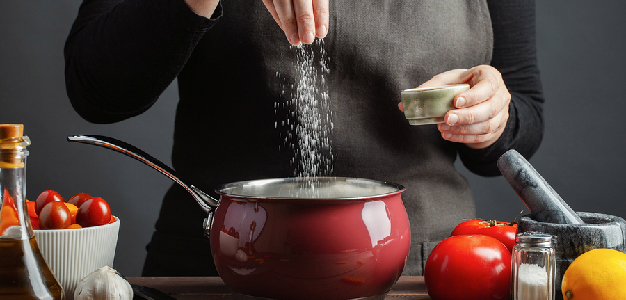I wrote a post on salt a couple of summers ago, and it’s a topic worth revisiting, especially since the research of late has scientists shaking their heads.
In 2017 I said we’re often wary of salt because of its link with high blood pressure, so stay away from the refined stuff and use better quality salts that won’t cause a problem.
Two years on I’m not so sure about this link with blood pressure. While salt can increase blood pressure, it doesn’t seem to increase it enough to be the hazard it’s been made out to be. Similarly, reduced salt intake alone won’t miraculously lower blood pressure.
Salt contains sodium and chloride, and both are essential. If you find yourself in hospital unable to eat or drink you can guarantee you’ll be hooked up to a saline drip. And no one will be panicking that it’s raising your blood pressure. Without salt we’d die.
Moreover, many real foods naturally contain salt — meat, fish, eggs, dairy, and so on.
One European GP who writes extensively about heart disease has even questioned whether high blood pressure is a cause of cardiovascular disease. He suspects that the opposite is true: i.e. that cardiovascular disease increases blood pressure.
I also wonder whether the dietary problem isn’t so much salt but refined foods. These invariably contain salt, but they also contain trans fats, sugar, flour and a stack of empty calories.
The DASH (Dietary Approaches to Stop Hypertension) diet, which is recommended for lowering blood pressure, is likely to be effective because it focuses on eating real food.
Recent studies on salt have turned a lot of our thinking upside down. For example, we’ve assumed that if we ate more salt our thirst mechanism would make us drink more to compensate. But apparently not. It seems we drink less.
Research on Russian cosmonauts and follow-up studies on mice have shown that on high-salt diets both human and mouse bodies will break down fat and muscle to produce water. Rather than us drinking it, our bodies make the water.
A Harvard Medical School kidney specialist likened it to the way camels get water in the desert by breaking down the fat in their humps.
Extraordinary. But it underlines that we’re a long way from understanding the way salt works, or its relationship to blood pressure.
Given all of that, the healthy approach to salt consumption would seem to be not too much and not too little.
I’d still be choosing a mineral-rich salt such as Himalayan or Celtic sea salt rather than refined table salt.
Our bodies also need a balance between sodium and potassium. On a real-food diet we’ll get plenty of potassium. It’s in foods such as avocado, banana, sweet potato and pumpkin, cooked spinach and other leafy greens, peaches, nectarines, mango, mushrooms, legumes and fish.
It so happens that a lot of these same foods are high in magnesium.
There’s been speculation that cramps — which some of us get more of in the summer — could be related to insufficient minerals (such as sodium, magnesium, potassium or calcium).
I know women who eat extremely well who are still prone to them, so I doubt it’s the whole story. But a broad-ranging diet of real foods is a good start.
For healthy blood pressure, aside from eliminating refined food and eating plenty of those potassium and magnesium-rich foods, make sure you’re doing regular exercise, managing your stress and getting some sunlight. The nitric oxide in our skin reacts to the sun and causes our blood vessels to widen. That in itself reduces blood pressure.

